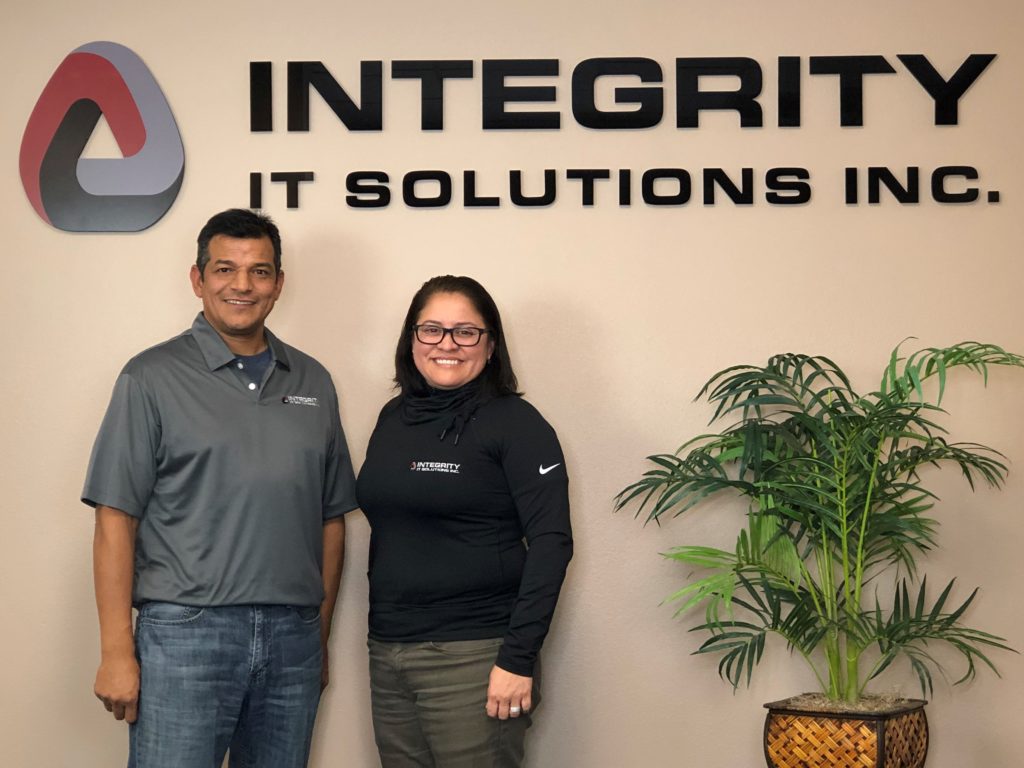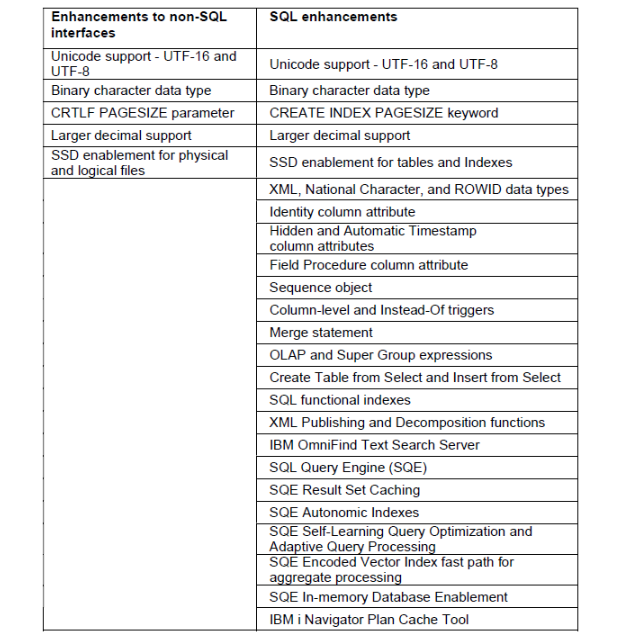Modernization Assessment

Integrity will partner with you to assess your application inventory and how it aligns with your business priorities before the modernization of your application. This will help you establish the best path to modernization and determine the effort and resources required. Aligning your approach with your overall business priorities allows you to understand what needs are driving you to modernize.
The modernization assessment will provide you with a plan that is designed around your unique business situation and will contribute to your business success in the long term.
Integrity will assist you by iteratively gathering data about your environment, severs, applications, and how you use them. A mapping matrix will be created to understand each application architecture and ensure how the adjacent technologies are connected. From that matrix, we can help you prioritize what needs to be updated first and which applications are suitable for on premise, hybrid, or cloud services.
As we help you plan for your cloud migration strategy, we will take a variety of different factors into consideration including your organization’s key business and technology initiatives, the security and compliance constraints, and the service levels you expect to be able to meet. This will provide you with a strategy of the intended future state after modernizing your current environment.
Cloud Enablement
Integrity will partner with you and KeyInfo, Inc. to identify candidate workloads that can be moved from on premise to the cloud. We conduct a comprehensive study on the application and adjacent technologies to ensure the workload will work as if it were on premise.
- Move OS/400, iSeries, i5/OS applications into the most technologically advanced and secure cloud environments available
- Eliminate the risk, expense and time associated to maintaining hardware
- Run the best in security and resiliency at a fraction of the cost in owning your own infrastructure
- Provide permanence and business continuity to mission critical applications at the bandwidth and price that best fits your organization
Disaster Recovery
We can architect Vision Solutions MIMIX on premise or in the cloud. We can take your requirements and build the into a solution that we implement.
Vision Solutions Disaster Recovery on MIMIX
High Availability and Disaster Recovery Software for IBM i
- Faster Recovery
- Stronger Data Protection
- Smarter way to manage high availability for IBM i
- Scalable, flexible replication technology
- Convenient management with an intuitive interface
- Easy to configure, monitor and control
- Customizable, automated procedures
- Auditing for data integrity and switch confidence
- Ultimate protection with multiple HA/DR servers
- Automated IBM i server optimization
KeyCloud Disaster Recovery as a Service (DRaas)
For those clients that are not interested in building a high availability and disaster recovery solutions on premise, we partner with Key Information Systems, Inc. to deploy KeyCloud for DRaas.
KeyCloud offers real solutions for your disaster recovery challenges
- Ensures your business is ‘always on’ without any hardware investment
- Eliminates the cost of an off-premise location, infrastructure, and personnel
- Offers a full suite of solutions from ‘cold’ to active/active replication for your business in our secured KeyCloud data centers
- Fully-featured testing suite to allow non-disruptive DR tests of your production environment
- Guarantees recovery time and point objective (RTO and RPO) within minutes
- Focuses on customer’s business needs

Nightly Backup and Recovery
Integrity architects and implements nightly backup for on premise and cloud enabled solutions.
- Hardware
With the latest generation of tape technology, we still see client needs for tape media, and therefore we continue to architect physical tape solutions. Based on our nightly backup and recovery assessment outcome we also deliver disk-based solutions.
Integrity also partners with KeyInfo, Inc. to provide cloud-based solutions that offer better performance reliability and access. The KeyCloud solution looks and acts like a tape. The KeyCloud standard offering never brings your production system down. 6 dailies and 4 weeklies are included, with additional monthlies optional.
KeyCloud stores a copy of your backups out-of-state as part of our standard offering. Monthly tape duplication is available. Tape is handled in accordance with SSAE 18 and HIPAA policies.
- Software
Integrity offers services to integrate BRMS for IBM i.
BRMS Overview
BRMS works in conjunction with your IBM I platform to manage the most critical and complex backups while simplifying day to day operational tasks. BRMS provides 3 basic functions.
- Backup: Use BRMS to back up all the data on your IBM I platform including objects in libraries, folders, directories, spooled files, security information, system configurations, and the operating system itself.
- Recovery: With BRMS, you can restore your entire system, or selected items such as control groups, libraries, objects, folders, auxiliary storage pools (ASPs), spooled files, or integrated files system links.
- Media Management: BRMS media management tracks all your tapes and save files.
Migration
Integrity partners with you to migrate your workloads from on premise aged hardware to the latest hardware, on premise to cloud solutions, and full cloud deployment. If you choose full cloud deployment, Integrity partners with KeyInfo, Inc. cloud services to help you migrate to a cloud environment to improve operational speed and performance, workload scalability, and environmental security and stability.
Integrity can advise on the best migration approach for your enterprise, from any environment to any cloud.
DB2 for i
Most IBM i modernization tools and projects seem to focus on the user interface. But true modernization happens at three levels.
The database, the development environment, and the user interface.

It can be argued that the biggest gains and the foundation for real modernization should begin with the database.
The reliability of the IBM i as a server is legendary, with price, performance, and scalability that competes head to head with any other platform. It’s a combination that makes it an ideal server for SQL workloads. It was one of the first platforms to be 100% compliant with the core level of the ANSI 2008 SQL Standard. And it offers many features that make it relatively easy to port databases from MySQL, SQL Server, Oracle, and others.
Those IBM i clients who have failed to keep track of this SQL metamorphosis are missing out on a plethora of new SQL-based functions that can make it easier for their IT teams to meet the ever-changing list of business requirements. In addition to taking advantage of the new functionality, organizations who embrace SQL typically find that: Developers can deliver on requirements faster because the modern SQL features allows the DB2 engine to do more work on behalf of the application.
More business processing performed by DB2 means that developers have to write and maintain less application code.
Improved performance and scalability can be a side benefit as the DB2 engine can perform some business processing faster and more efficiently than a high-level language application because the engine operates at the lowest levels of the system with sophisticated algorithms.
Table 1: Comparison of DB2 enhancements since Version 5 Release 1(V5R1)

The efficiency of data-centric programming
This approach of using SQL to have DB2 do more work on behalf of the application is known as data-centric programming. A better understanding of this data-centric approach with the traditional record-level access methodology can be garnered by comparing the graphical representation of these two approaches, shown in Table 1.
What SQL means for businesses
In summary, the benefits of using a data-centric approach that features the usage of SQL and modern database functionality are:
- Faster IT response to business requirements
Data-centric programming enables developers to focus their efforts on delivering business logic and relieves them from the responsibilities of implementing relational data processing. The result is a reduction in the amount of code that developers have to write as they rely more on the DB2 engine to take care of the implementation details. The SQL interface also offers a much larger set of features and functions to choose from which provides developers more opportunities to offload processing into the DB2 engine instead of creating application logic to perform the processing.
- Reduced software development and maintenance costs
The movement of common business rules and processes into the database engine results in a smaller amount of software code that the IT teams need to write and maintain. These centralized business rules and processes are automatically reused instead of being recreated as new applications and business functions are brought online.
- More reliable data to run your business on
Embedding common business rules into your database objects means that these rules are enforced regardless of the interface used to access the data. This centralization of rules within the database eliminates the exposure of tools and devices bypassing the rules and controls associated with your business data.
- Improved performance and scalability
A data-centric approach results in DB2 performing tasks that are normally done at the application layer. Performance of the applications can be improved overall because the DB2 engine is doing the processing at a lower level in the system than the original application logic. In addition, datacentric applications benefit from the fact that IBM is putting almost all of its investment in SQL performance enhancements, which include self-tuning capabilities.
- Sensitive data protection
Sensitive data is more easily protected with encryption using the SQL Field Procedure support. This technology permits the deployment of column-level encryption solutions with minimal disruption to existing applications.
- Minimize risk with clear documentation
The documentation and structure of many DB2 for i databases probably exist only in the minds of developers. With the proliferation of data modeling tools for SQL databases, complete and easy-to-understand documentation is just a click away after moving your databases over to SQL.
- Access to a larger pool of talented developers to build IBM i solutions
While it is a fact that there are fewer programmers versed in the IBM i DDS and record-level access interfaces coming out of universities, the vast majority of new programmers do have SQL experience. Using DB2 for i support for procedural SQL objects, such as stored procedures and functions, a new SQL developer can quickly contribute to the delivery of an IBM i application with a very small learning curve.
Milligan, K. and Hendrickson, D. (2012). DDS and SQL – The Winning Combination for DB2 for i. [online] Static.adsero-optima.com. Available at: https://static.adsero-optima.com/assets/ibm—dds-and-sql-whitepaper-the-winning-combination-for-db2-for-i—september-2012-update.pdf [Accessed 25 Jan. 2019].
